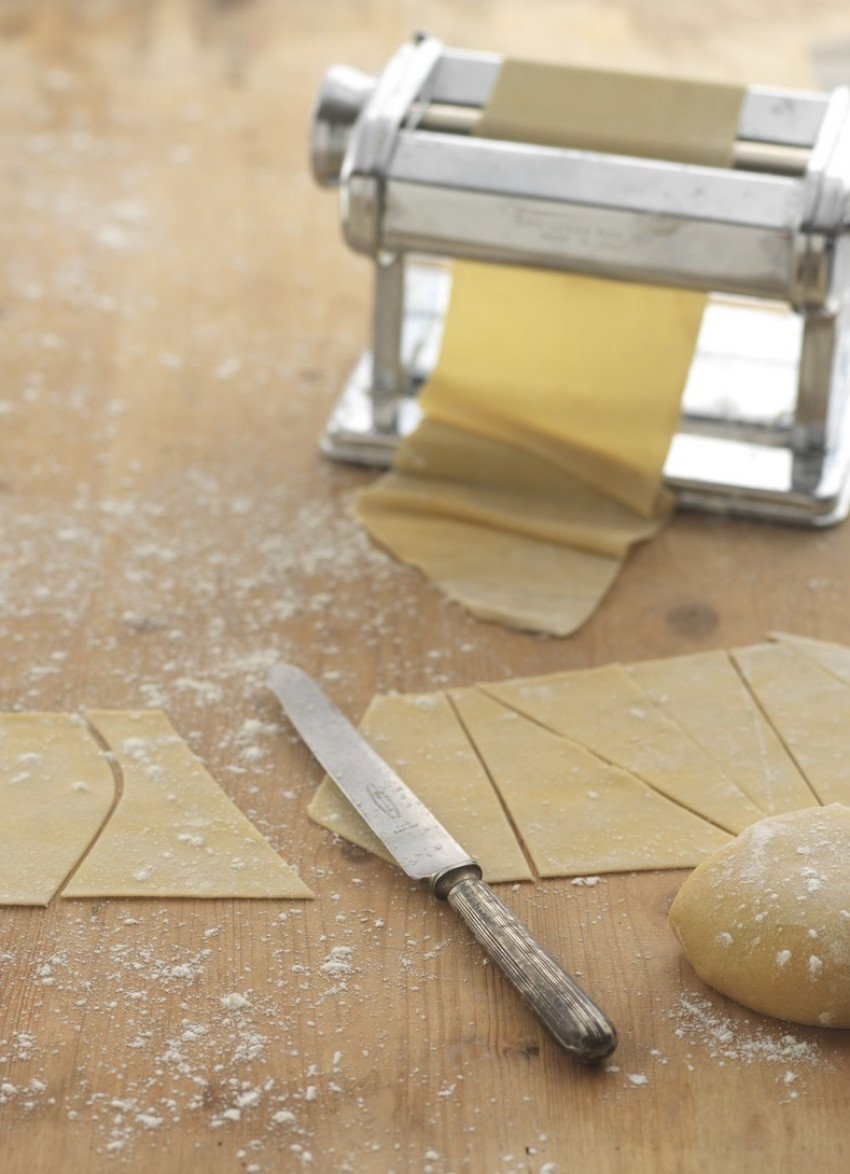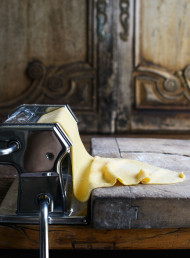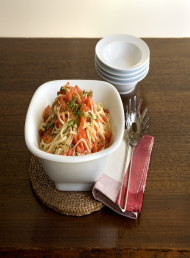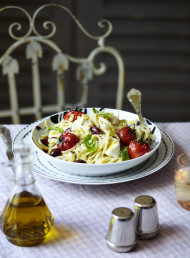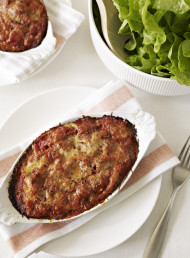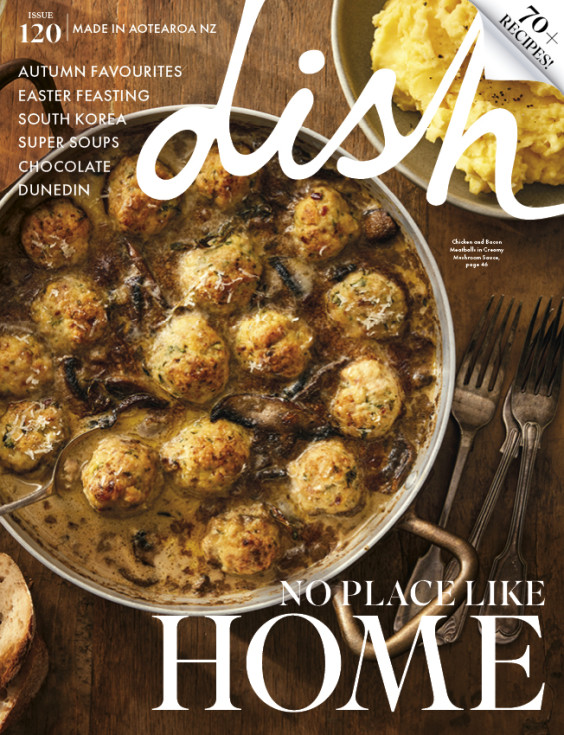Pasta
Photography by Nick Tresidder.
It is best to purchase special flour for pasta. This flour, made from durum wheat, is described as 'hard' meaning it is high in gluten and will give pasta a good texture and 'bite'.
INGREDIENTS
300 grams '00' flour
3 free-range eggs
1/2 teaspoon sea salt
1 tablespoon olive oil
METHOD
By hand: Mound the flour on the bench and make a well in the centre. Put the eggs, salt and oil in the well. Mix the liquid ingredients together with a fork then gradually start to incorporate the flour from the inner rim of the well. Keep pushing the flour up to retain the well shape. When the dough becomes like a thick batter, start mixing the flour and dough together with your hands to form a ball. Knead the dough on a lightly floured bench until smooth and starting to feel elastic, about 4-5 minutes. Wrap the dough in plastic wrap and rest for 30 minutes.
By machine: Put the dough ingredients in a mixer with a dough hook attached. When the dough has come together transfer to a clean bench and knead for 5 minutes or until silky and smooth. Cover in plastic wrap and refrigerate for 30 minutes.
Divide the dough into four pieces. Flatten one piece into a rectangle and dust well with flour. Cover the remaining pasta to prevent it drying out.
Set the rollers on the pasta machine to the widest setting and pass the dough through. Fold into three and pass through the widest setting again.
Repeat this process 4 more times. The dough is now ready to be stretched.
Move the rollers to the next setting.
Without folding it again, pass the dough, three times through the rollers. Catch the dough with a flat palm so as not to tear it. Move the rollers up a notch and repeat with the pasta until you have reached the desired thickness for the recipe. If the pasta gets too long, cut it in half. Lightly flour the dough between each successive rolling if needed. Cut the pasta required.
Keep up to date with
dish weekly recipes,
food news, and events.
latest issue:
Issue #120
As the days become shorter, and the nights cooler, the latest issue is perfectly timed to deliver delicious autumn dishes. From recipes using fresh seasonal produce such as feijoas and apples, to spectacular soothing soups and super-quick after-work meals in our Food Fast section, we’ve got you covered. With Easter on the horizon, we feature recipes that will see you through breakfast, lunch and dinner over a leisurely weekend holiday, and whip up chocolatey baking treats sure to please. We round up delicious dinners for two and showcase a hot new Korean cookbook before heading south to Dunedin to check out all that’s new in food and dining.The latest issue of dish is on sale NOW at all good bookstores and supermarkets – don’t miss it!

